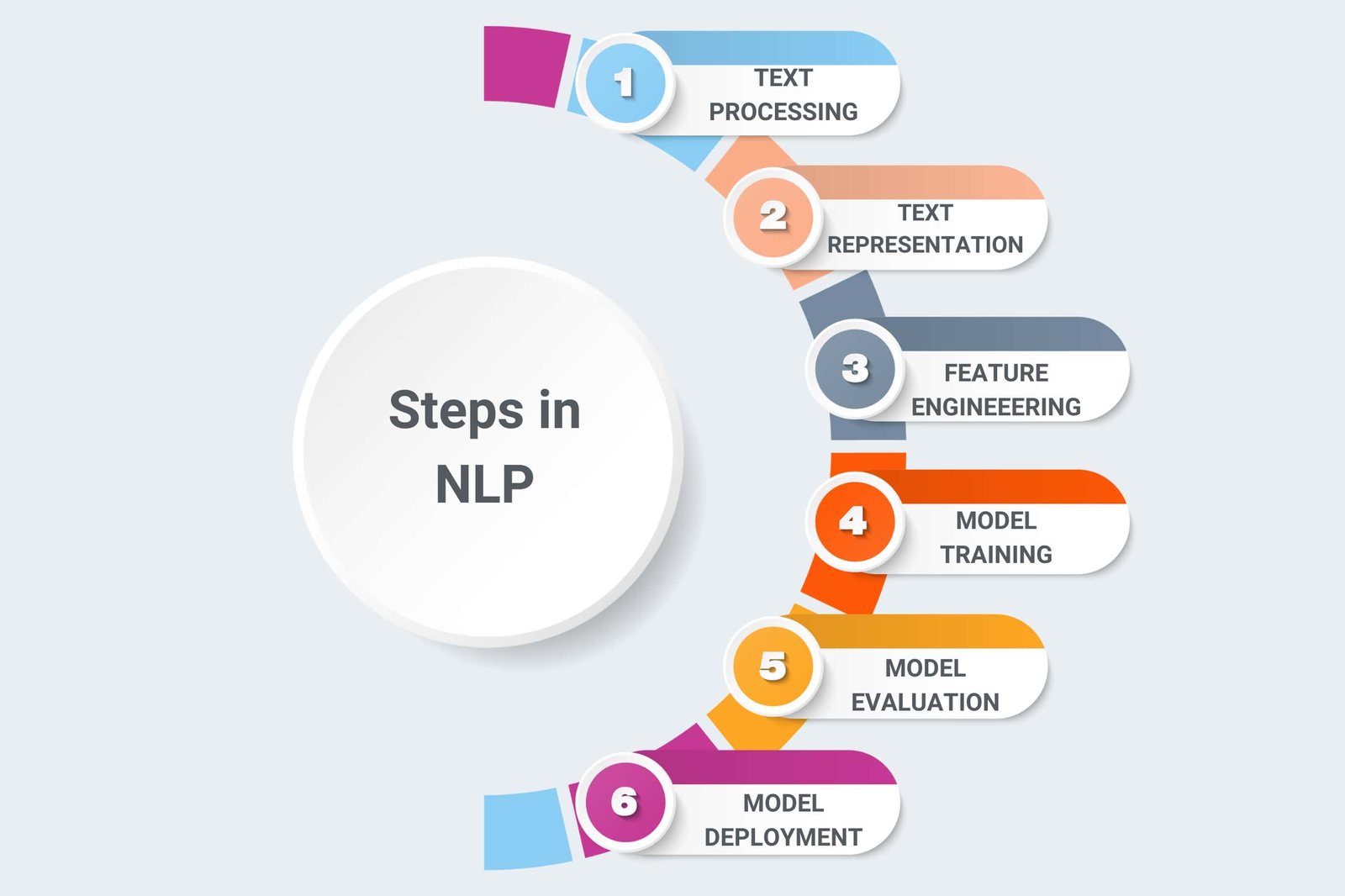Have you ever wondered how robots work just like human beings? It involves the processing of information and following commands is in the same line as that of the human brain. Do you know what powers this human-like operation? Well, it’s Natural Language Processing that equips the machines to work like a human. But there is much more to NLP, and in this blog, we are going to dig deeper into the key aspects of NLP, the benefits of NLP, and Natural Language Processing examples.
What is NLP?
Natural Language Processing (NLP) focuses on enabling computers to understand, interpret, and generate human language. It involves the development of algorithms and computational models that can process and analyze large volumes of natural language data, including written and spoken language.
Natural Language Processing sews the gap between humans and computers by empowering machines to comprehend and respond to Natural Language input, making communication between humans and computers more seamless and efficient. All-in-all, it makes the machine work more like a human. Some of the prominent Natural Language Processing applications include virtual assistants, chatbots, sentiment analysis, and machine translation.
Steps to perform NLP:
This segment of the blog throws light on the key steps to perform NLP:
1. Text Preprocessing
This step involves preprocessing of raw text data. Thus making it apt for analysis. It involves different activities like tokenization, stop-word removal, lower-casing, and lemmatization.
2. Text Representation
The next step is the representation of text, which involves the conversion of the data into a numerical format such that it is easily comprehensible. Some of the common methods involved in this are Bag-of-Words (BoW), Term Frequency-Inverse Document Frequency (TF-IDF), and word embeddings.
3. Feature Engineering
Making accurate predictions of the numerical data is important. And so Feature Engineering focuses on the same. It ensures that the model is able to make accurate predictions of the information. It includes methods like sentiment analysis, part-of-speech tags, and others.
4. Model Training
Since you now have the preprocessed and represented text data, you can now train a machine-learning model. There are several types of models that can be used for NLP, including classification models, regression models, and clustering models.
5. Model Evaluation
After training the model, its testing is the next step. It ensures that the model works accurately. It involves performance metrics like accuracy, precision, recall, and F1-score.
6. Model Deployment
After the model has been evaluated and meets the desired performance criteria, it can be deployed in a production environment to make predictions on new text data.
These are the basic steps to perform NLP, and the specific details of each step may vary depending on the specific task and data at hand.
Benefits of NLP:
Natural Language Processing (NLP) is gaining popularity for the right reasons. Here are some of the key benefits of NLP:
1. Automating Tasks
One of the key advantages of NLP is that it ensures seamless automation of the task. This makes the system more effective, efficient, and flawless. One of the most practical examples of the same is the Chatbot.
2. Improved Customer Experience
The end objective of every organization is to ensure premium customer service. Addressing the issues and resolving the query improves the customer experience. With the help of NLP, companies can analyze customer feedback and sentiment. Eventually, it helps in improving their products and services and provides a better customer experience.
3. Efficient Data Analysis
Apt Data Analysis plays a significant role in making the right decision. With the help of NLP, businesses can automate data analysis work, like the classification of text and its class three. Thus, it saves time and resources.
4. Improved Decision-making
Right decision-making and strategic planning can help in enhancing business productivity. With the help of NLP, companies can extract insights from unstructured data like customer reviews, feedback, social media posts, and news articles. This eventually helps in making better decision making based on apt data analysis.
5. Automated Content Creation
NLP can be used to generate content, such as product descriptions, summaries, and news articles. This can save time and resources while ensuring high-quality content.
6. Language Translation
NLP can be used to translate text from one language to another, which can be useful for businesses that operate in multiple countries and need to communicate with customers who speak different languages.
Read Blog?How to Build a Data Analyst Portfolio?
Key Applications of NLP:
With the greater efficiencies and features of Natural Language Processing, it is finding multiple applications across the industry. Here are some of the key applications of Natural Language Processing:
1. Chatbots and Virtual Assistants
One of the trending examples of NLP is chatbots and virtual assistants. These are designed in a way such that it understands the natural language queries and provides the necessary solutions. Thus, it helps in improving customer service and automating tasks.
2. Sentiment Analysis
Another significant application of NLP is in sentiment analysis. Since understanding the social media post, reviews, and feedback of the customer eventually helps the business improvise its strategies and processes, companies actively adopt the right way of doing so. Thus, helping them cater to their customer’s queries and requests.
3. Text Classification
Classification of text is also significant as it helps in filtering out spam and legitimate content from the one which is of significance to the organization. Thus, it helps in building a large volume of data, thereby ensuring accurate analysis.
4. Named Entity Recognition
NLP can be used to identify and extract named entities such as people, organizations, and locations from text data. This can be useful for applications such as information extraction and text summarization.
5. Machine Translation
It can translate text from one language to another. This can be useful for businesses that operate in multiple countries and need to communicate with customers who speak different languages.
6. Speech Recognition
NLP can be used to transcribe speech into text, which can be useful for applications such as voice assistants, dictation software, and closed captioning.
Parting Thoughts
These are some of the significant applications of NLP, while it is not limited to these. Moreover, with the growing improvement in the basic framework and algorithms, the technology will evolve over a period of time.
However, the road is not so smooth. There are certain challenges in the application part of NLP. Since the primary objective of Natural Language Processing is to train the machine to behave and perform like a human brain. Thus it needs continuous improvisation. Therefore, it requires rigorous processing of data. And so the focus is to design machines and algorithms which are powerful and evolve with time.
Moving Ahead with Pickl.AI:
At Pickl.AI the focus is to train individuals on the key aspects of Machine Learning and Data Science. Thus, by the end of the course, the students will be able to make the apt implementation of the concepts. You too can join these courses by logging on to Pickl.AI and take your career on the growth trajectory.











